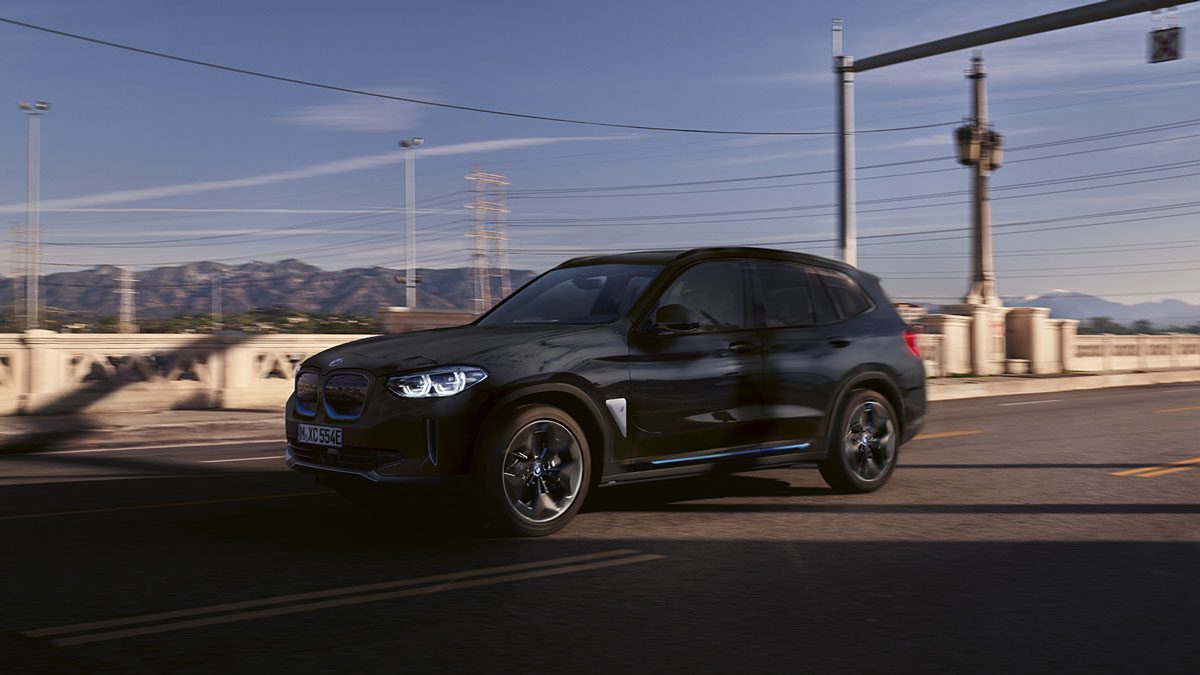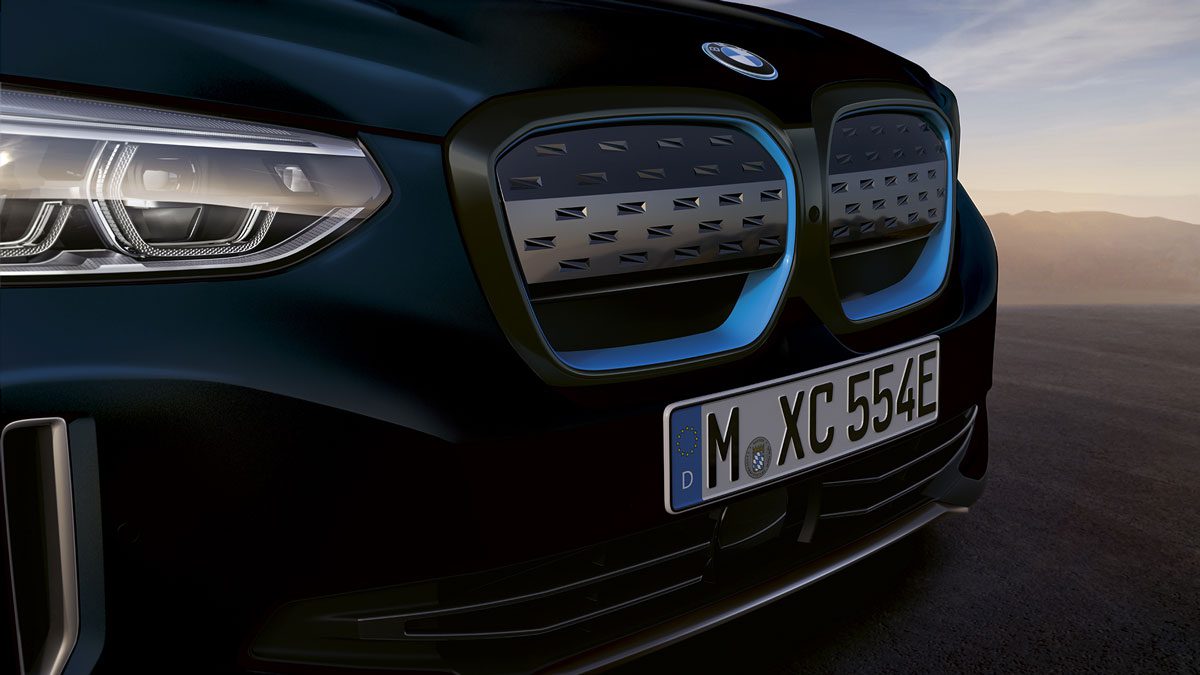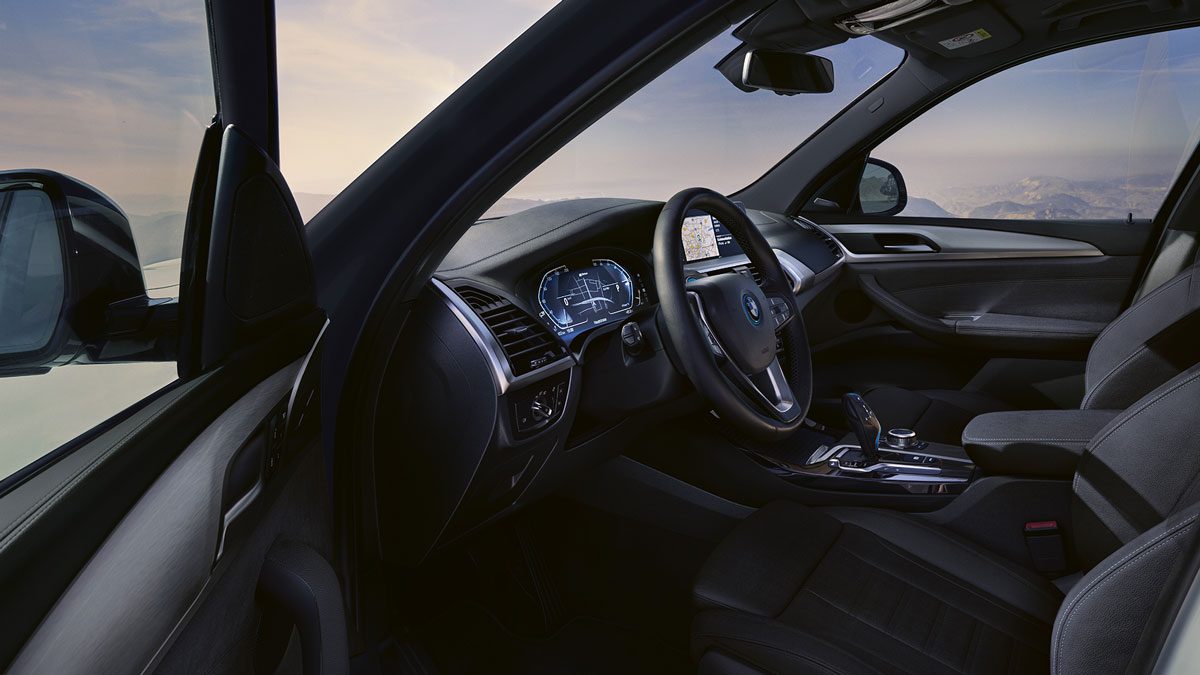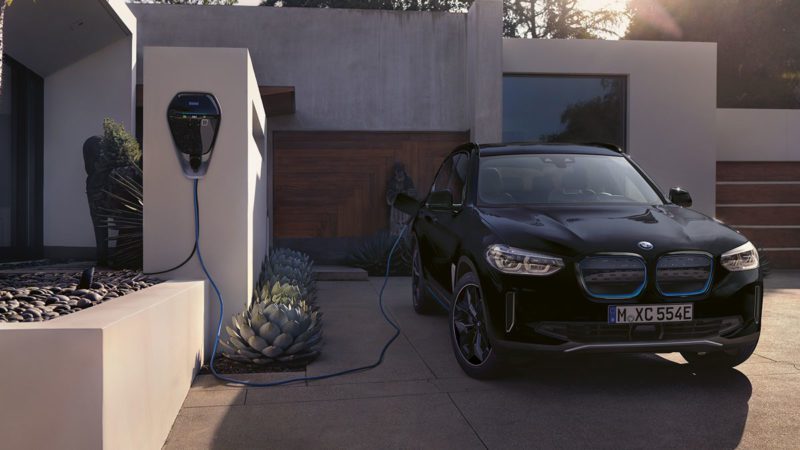German car maker BMW has announced UK specifications and pricing for its upcoming iX3 all-electric SUV, which will be launched in the UK summer of 2021.
Visually, BMW’s first electric SUV differs little from combustion models, unlike the first series electric i3 hatch, which has a distinctive design that made it stand out in a crowd.
With the iX3, BMW is instead embracing the increasing acceptance of electric vehicles as a mainstream vehicle, and is also seeking to increase that acceptance by offering a driving range of 460km on a single charge.
Produced in China, it will reach first customers in the UK in mid-2021 (Europe will get it in early 2021), with pricing from £61,900 ($A109,511 converted) drive-away for the BMW iX3 premier edition.
Considering BMW has been an early mover in the legacy car maker electric vehicle market with the i3 (and the i8 plug-in hybrid), its first electric SUV is a little tardy – the Audi E-Tron reached its first customers at the end of 2018 and will be launched in Australia shortly. The Mercedes-Benz’ EQC has been available in Australia since early 2020 and the Jaguar I-Pace before that.
But it would at first sight appear it is not a case of too little, too late.

New battery, new electric drive
In the adapted X3 floor pan, the iX3 has a flat lithium-ion battery composed of 188 prismatic cells, the energy density of which, according to the manufacturer, is 20 percent higher than that previously used by BMW.
The battery weighs a total of 518kg, giving the entire vehicle a weight of 2,185kg – 310kg less than the slightly longer Mercedes EQC with the same size battery.
With the 74 kWh net capacity, the BMW iX3 battery delivers up to 460km according to the European WLTP driving cycle.
The 93% efficiency of the BMW’s 5th generation integrated electric drive system, which combines the motor, transmission and power electronics are into one unit and which will also be used in the i4 and iNext, is 30 percent better than the i3,and far outweighs the combustion engine average of 40% efficiency.
This means average consumption is put at at 18.5 to 19.5 kWh per 100 kilometres (according to WLTP) – not too far off the Tesla Model Y crossover’s 17.5 kWh.
BMW has also added a heat pump as standard, further improving efficiency in winter.
Maximum 150 kW charge rate
BMW’s fifth generation electric drive technology also includes a new charging unit, which supplies the 400 volt battery, as well as the 12 volt on-board network.
It allows single- and three-phase charging with up to 11 kW, but it is the DC fast charging capability of up to 150 kW that is a winner.
It means that the high-voltage battery can be charged from 0-80% within 34 minutes, and 100 kilometres of range added in 10 minutes.

Adjustable recuperation
The BMW iX3’s energy recuperation adapts to traffic situation with the help of navigation data and the sensors of the driver assistance systems.
When approaching an intersection, a speed-limited section of route or a vehicle in front, the iX3 recuperates as much as possible; it sails on an open route as soon as the driver takes his foot off the accelerator pedal.
This can be overridden in gear position D by selecting high, medium or low recuperation mode, and for those who want to adjust the propulsion without a brake pedal (one-pedal driving) can set the selector lever to “B” to choose high recuperation performance.
Power and torque
BMW specifies the performance of the iX3 with 286 horsepower and a maximum torque of 400Nm, which thanks to its electric drive can be accessed from a standing start.
This gives the rear-wheel drive an acceleration from 0-100 km/hr in 6.8 seconds, with a maximum speed of 189km/hr.
While this means less torque acceleration than the powerful X3 30d xDrive’s 650Nm and 5.7 second sprint, BMW apparently suspects its main audience will be China which has less demand for all-wheel drive and excess torque.
Aerodynamics
In terms of visual appearance, the iX3 has a lot in common with its combustion stablemates, including the front apron and BMW kidney grille as well as the underbody are largely closed.
Fine-tuning on the underbody, in the area of the rear diffuser and the landing gear struts, as well as an air flap control should further improve the wind slippage have achieved a drag coefficient of 0.29 – quite a bit more draggy than the Tesla Model Y’s 0.23 but better than the average SUV.
BMW has also already unveiled the aerodynamically designed light alloy wheels in advance, which ensure a controlled flow around the vehicle and thus a reduction in the drag coefficient by around 5 percent adding 10 kilometres more range according to the WLTP.

Interior and technology
Inside, the iX3 gets acoustic feedback thanks to the “IconicSounds Electric”, a debut for BMW electric vehicles. Its advanced operating system version 7 delivered from a 12.3″ instrument cluster behind the steering wheel and a 10.25″ central touchscreen allow access to controls, but the vehicle also offers the option for voice control and multifunction buttons on the steering wheel.
BMW’s “Live Cockpit Professional” adds digital servcies including Google Assistant, Googla Maps, Android Auto and Apple Carplay, Spotify, Amazon Music and Whatsapp.
It is expected that the BMW iX3 will go on sale in Australia in mid-2021, and that local pricing and specifications will be detailed closer to launch.

Bridie Schmidt is associate editor for The Driven, sister site of Renew Economy. She has been writing about electric vehicles since 2018, and has a keen interest in the role that zero-emissions transport has to play in sustainability. She has participated in podcasts such as Download This Show with Marc Fennell and Shirtloads of Science with Karl Kruszelnicki and is co-organiser of the Northern Rivers Electric Vehicle Forum. Bridie also owns a Tesla Model Y and has it available for hire on evee.com.au.


